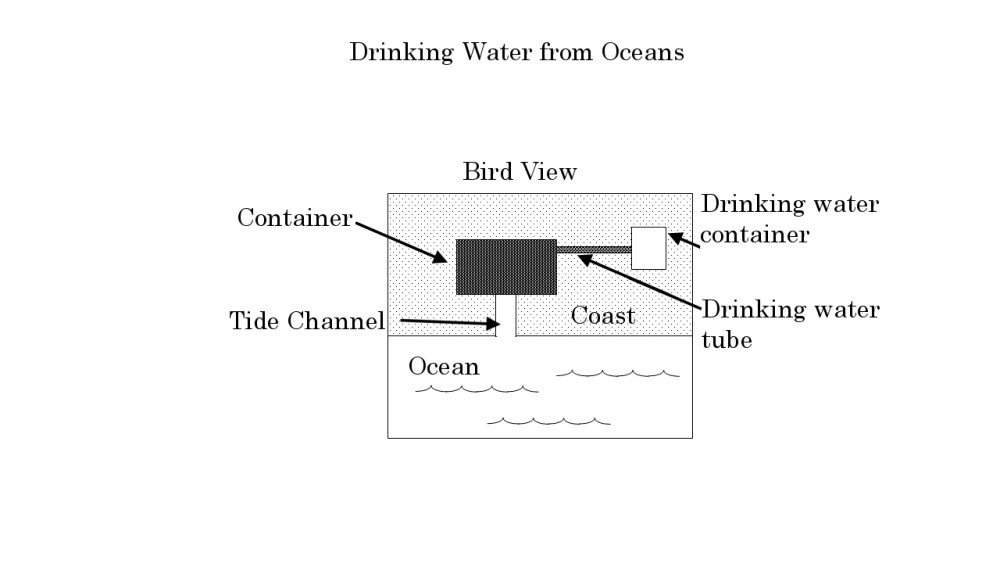Problem:
On the ocean coast, in hot countries, there may not be enough drinking water.
Benefits:
Creating an additional source of drinking water without using electric energy. The use of the energy of ocean tides and castings.
Work
Creating a tidal metal greenhouse near the ocean.
During the tide, the greenhouse is filled with sea water as much as possible. After filling, the greenhouse is closed completely. Since the sun begins to heat the greenhouse, the temperature rises inside the greenhouse, sea water begins to evaporate, condensate settles on the wall and ceiling inside the greenhouse. The walls of the greenhouse are designed so that condensate begins to gather near the tube going out. Condensate is drinking water without sea salt. Through the tube, condensate is excreted out.
Novel
The metal container with sea water is heated by the sun. A water vapor is formed inside the container. The condensate is excreted through the tube or pipeline.
The use of the sun to obtain drinking water by evaporation of sea water.
Where
In hot countries, on the ocean coast.
Manufacture
The tidal metal greenhouse can be produced at the plants that produce iron structures, sea containers, tanks for the transportation of liquids.
Cost
The costs of building a metal greenhouse and a channel for a tidal wave. It is necessary to compare the production of drinking water in this way with alternative methods.
Market potential
Drinking water is needed for the entire population, that is located near the ocean. Suppose the number of coastal population is 100 million people. 3 liters of water are the daily need of each person.
1 Liter drinking water = USD 0.1
100,000,000 people * USD 0.1 * 3 L =
USD30,000,000 per day * 365 days =
USD10,950,000,000 per year or nearly
11 Billions US dollars per year.
Like this entry?
-
About the Entrant
- Name:Andrei Petrov
- Type of entry:individual
- Patent status:none

